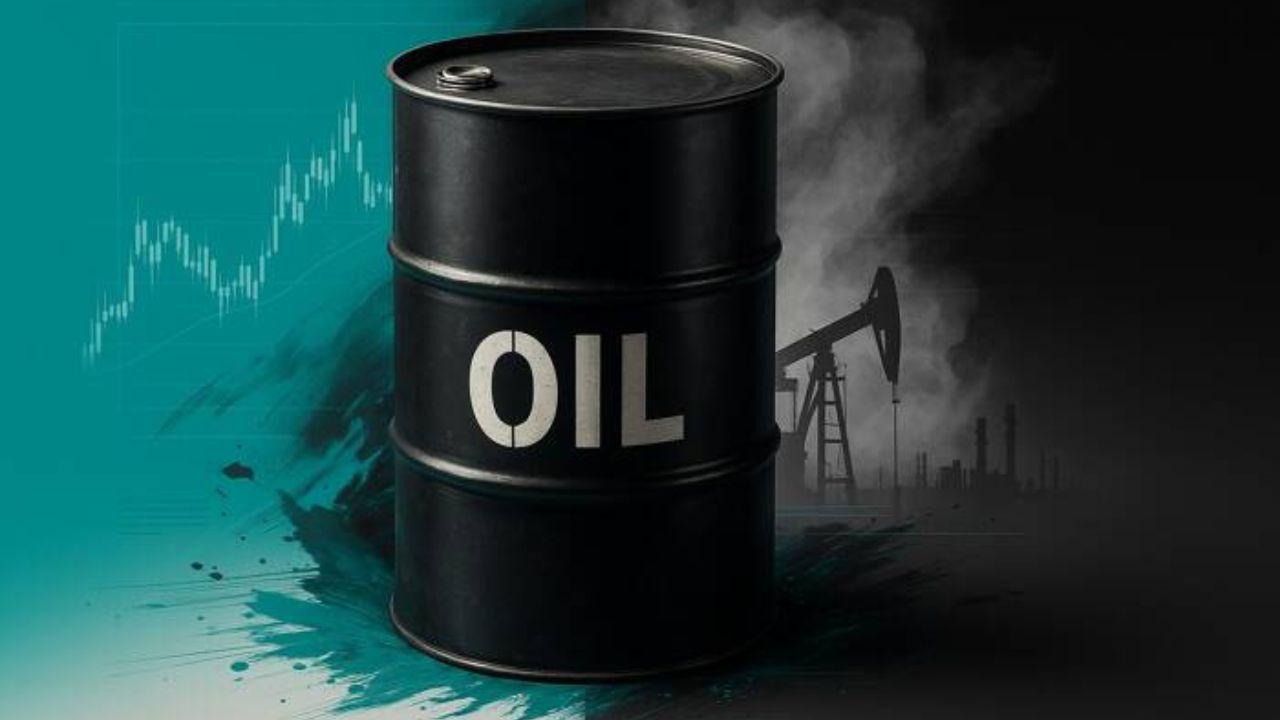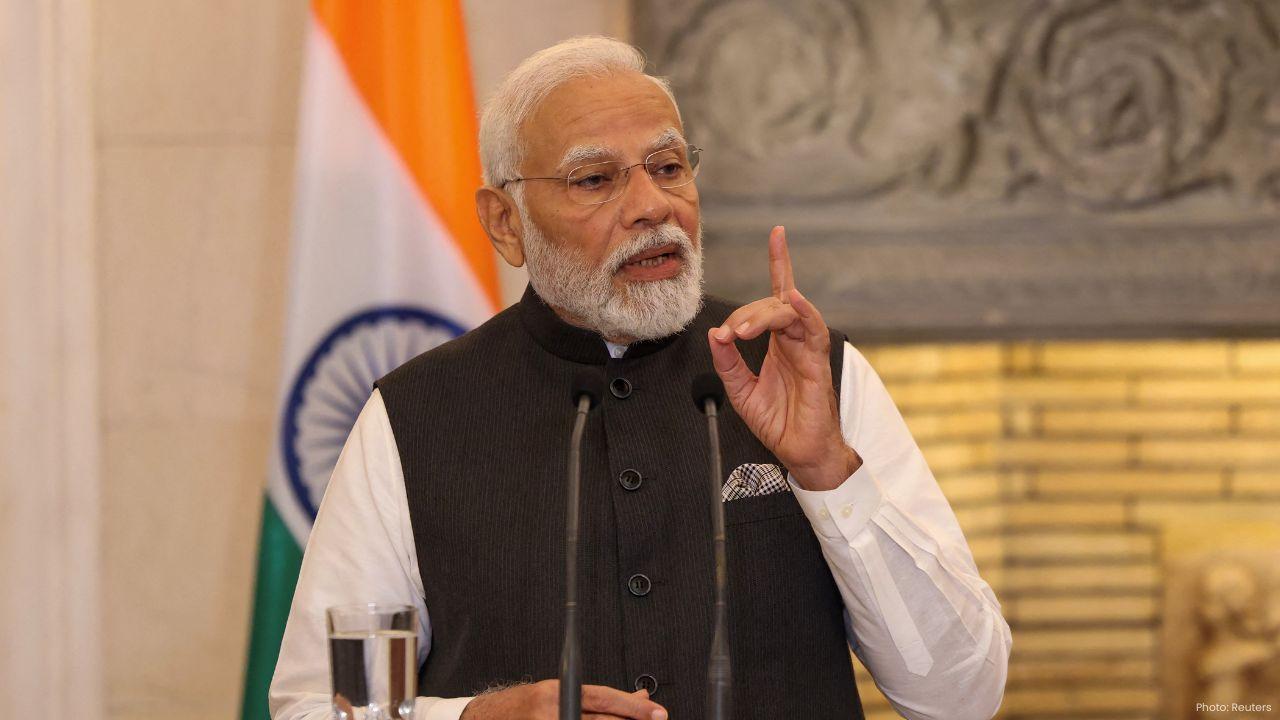
Post by : Avinab Raana
Photo : X / FXEmpire
Oil markets turned tense as prices edged up amid fears that recent Ukrainian drone strikes could disrupt Russian energy supply just as traders await a critical U.S. interest rate decision. Supply risk and monetary policy are colliding in markets now, pushing crude higher. Brent crude climbed to about $67.52 per barrel while U.S. West Texas Intermediate (WTI) rose near $63.41.These numbers hint at more than just incremental moves. They suggest a global nervousness over how conflict, geopolitics and central bank policy will shape oil flows and demand in the coming months.
Ukraine has intensified drone attacks on Russia’s energy infrastructure, especially targeting refineries and export terminals. One prominent concern is Russia’s Primorsk export terminal, a key node for oil shipments. Analysts warn that such attacks could significantly impede Russia’s ability to export crude, pulling supply off global markets. Russia produces more than 10 percent of global oil output. When critical facilities are under threat, markets tend to react sharply—even before actual damage or loss of production is confirmed. The more frequent these attacks become, the higher is the premium oil buyers start paying just for uncertainty.
Traders are watching the U.S. Federal Reserve meeting scheduled for September 16-17 with bated breath. Expectations are rising that the Fed will cut interest rates. Lower rates tend to weaken the U.S. dollar, making oil more affordable for buyers using other currencies. That tends to raise demand and push prices up.
Yet there is a counter-force: signs of a fragile U.S. economy. Weak consumer spending, slowing manufacturing, and rising debt costs make rate cuts tricky. If the Fed signals concern over growth or inflation, that could dampen demand and weigh on crude. For now markets are straddling both hopes and fears.
On top of geopolitical risk and rate speculation, market watchers are also focused on U.S. crude inventory reports. Analysts expect U.S. crude stockpiles for the week ending September 12 to have dropped by about 6.4 million barrels, following a prior week that saw inventories build by 3.9 million barrels.
Declining inventory suggests either higher demand or lower supply—or both. If the drop is confirmed, it could add fuel to price gains. Traders, refiners and importers alike tend to treat inventory declines as signals that spare capacity is tightening.
A slipping U.S. dollar has helped underpin oil’s climb. Oil is priced in dollars globally, and when the dollar weakens, oil becomes cheaper for holders of other currencies. That tends to increase demand outside the U.S., boosting price.
With interest rate cuts expected, dollar strength might suffer, which creates a feedback loop: weaker dollar, stronger oil, higher inflation in importing countries—which in turn may influence central bank decisions globally.
Some analysts caution that the recent rebound in oil prices since early September has been fragile. Gains may be easily reversed if demand falters or supply risks fail to materialize. For example, demand from China or India may slow, or Russia may find rerouting or alternative export paths after damage to infrastructure.
Other risks include oversupply. OPEC+ members have committed to increasing output, and non-OPEC producers are also keeping barrels flowing. If supply increases faster than demand, oil could be pressured downward again—even if threats persist.
Geopolitics is a major undercurrent now. Russia’s conflict with Ukraine, attacks on export terminals, infrastructure sabotage—all are reinforcing risk premia in oil prices. At the same time, trade policy is in focus. U.S. officials have recently made statements about tariffs or trade sanctions aimed at reducing purchases of Russian oil by countries like China and India, but with caution about retaliation or fallout.
These political moves matter. Often the fear of disruption matters more than actual numbers, oil markets tend to price in risk well ahead of confirmed supply losses.
But it isn’t all one-sided. Demand remains the wildcard. Slowing consumer sentiment in the U.S., inflation eating into spending power, and rising borrowing costs are dragging on demand projections. Even as oil remains pushing upward, there is visible concern about whether demand can keep pace.
In Europe, energy demand tends to be stable but is sensitive to economic softness or regulatory constraints. If economies weaken, demand for oil which drives everything from transport fuels to industrial use can dip, trimming price upside.
The Fed meeting could tilt markets decisively. If the Fed cuts rates and signals optimism about inflation easing, that could reinforce bullish bets on oil. If the Fed indicates caution, warns of economic drag, or suggests slower cuts, markets could retreat.
Traders will also be sensitive to language about demand forecasts, inflation projections, and global risk, including spillovers from conflict zones. Clarity or lack thereof on how the Fed views global supply disruptions may significantly influence perceptions in oil markets.
Producers in Russia stand at the epicenter of risk. Any reduction in Russian output or export capability boosts margins for alternative suppliers. OPEC+ members with spare capacity may find demand shifting toward them. U.S. shale producers typically benefit in price uplifts if they are operating efficiently.
Importing countries with weaker currencies may feel pain from rising fuel costs. Energy companies, refining firms, shipping sectors all participants in the supply chain have heightened exposure to any volatility.
Investors are shifting money into oil futures, energy stocks, storage plays, and companies with exposure to supply constraints. Long positions are rising in commodities funds. Meanwhile, hedging strategies are in play: companies are using derivatives or forward contracts to lock in costs or limit exposure.
Energy-related equities, especially those tied to Russian supply, are under pressure from possible sanctions or export chokepoints. Many traders are also betting on the weaker dollar and rate cut expectations to support oil-linked assets.
Potential risks loom large. If Ukraine attacks turn out less damaging than feared, or if Russia quickly restores functionality, the supply premium could fade. Similarly, if the U.S. economy falters sharply, or if rate cuts fail to stimulate demand, oil might lose momentum.
Then there is the environmental and regulatory side. Carbon taxes, emissions regulations, alternative energy competition, and policy pushback can all squeeze oil markets. Additionally, better efficiency, electric vehicle adoption, and shifts toward renewables can reduce long-term crude demand, even as short-term supply instability boosts prices.
Traders will be watching the Fed meeting closely. Any hints on the timeline for rate cuts matter. Also, inventory data from the U.S. Department of Energy and related agencies will be closely parsed.
Updates on damage to Russian infrastructure, repair timetables, or new attacks will be key. Also tariff or sanction announcements connected to Russia’s oil trade, especially with India or China, could affect flows. Dollar strength or weakness will be observed daily.
This moment reflects how oil markets have become a nexus of conflict, policy, and macro-economics. Energy supply disruptions are no longer just regional worries—they affect global inflation, trade balances, currency values, and geopolitical alignment.
The risk premium in oil now reflects fears of chaotic supply, not just tightness. As more nations rely on reliable energy imports, oil market turmoil has widening impact: transport costs, food costs, heating, manufacturing. All ripple outward.
For consumers the question is simple: fuel prices, heating, transport all may rise. For investors, energy stocks may offer gains but carry risk. For businesses, especially those with high logistics or fuel costs, budget planning becomes more challenging. Policy-makers must balance energy security, inflation, and economic growth.
This moment is not just about barrels per day. It is about what the world is willing to pay for stability, what risks are acceptable, and how economic signals around interest rates, war, and trade converge.
Oil prices are in a fragile balance. On one side, supply risks from Ukraine’s actions against Russian energy infrastructure are feeding upward pressure. On the other side demand questions, rate policy, and economic health are counterweights.
If the Fed lowers rates soon, if supply disruptions deepen, prices could surge. If demand falters, or if Russia manages to compensate, oil may drift back down. Either way this week and next are likely to be decisive chapters.
Markets are weighing not only what is happening now but what might happen if instability intensifies, if monetary policy shifts, or if trade and sanctions further disrupt flows.
One thing is certain: global energy markets are more unpredictable than many expected. In that uncertainty lies both risk and opportunity.
oil supply risk, Fed rate decision, Russian energy disruptions










Bengaluru-Mumbai Superfast Train Approved After 30-Year Wait
Railways approves new superfast train connecting Bengaluru and Mumbai, ending a 30-year demand, easi

Canada Post Workers Strike Halts Nationwide Mail and Parcel Services
Canada Post halts operations as CUPW strike disrupts mail and parcel delivery nationwide amid disput

PM Modi Launches BSNL ‘Swadeshi’ 4G Network, 97,500 Towers Built
India enters global telecom league as PM Modi inaugurates BSNL’s indigenous 4G, connecting 26,700 vi

India’s Iconic MiG‑21 Takes Final Flight After Six Decades of Service
After 60 years India retires its MiG‑21 fighter jet, a legendary yet controversial warplane marking

Hindustan Zinc unveils AI hotspot monitoring at Debari smelter
Hindustan Zinc launches AI-powered Switchyard Hotspot Monitoring at Debari smelter to cut outages bo

Chinese experts worked inside sanctioned Russian drone plant
Chinese drone specialists visited IEMZ Kupol supplying parts and drones via intermediaries, deepenin